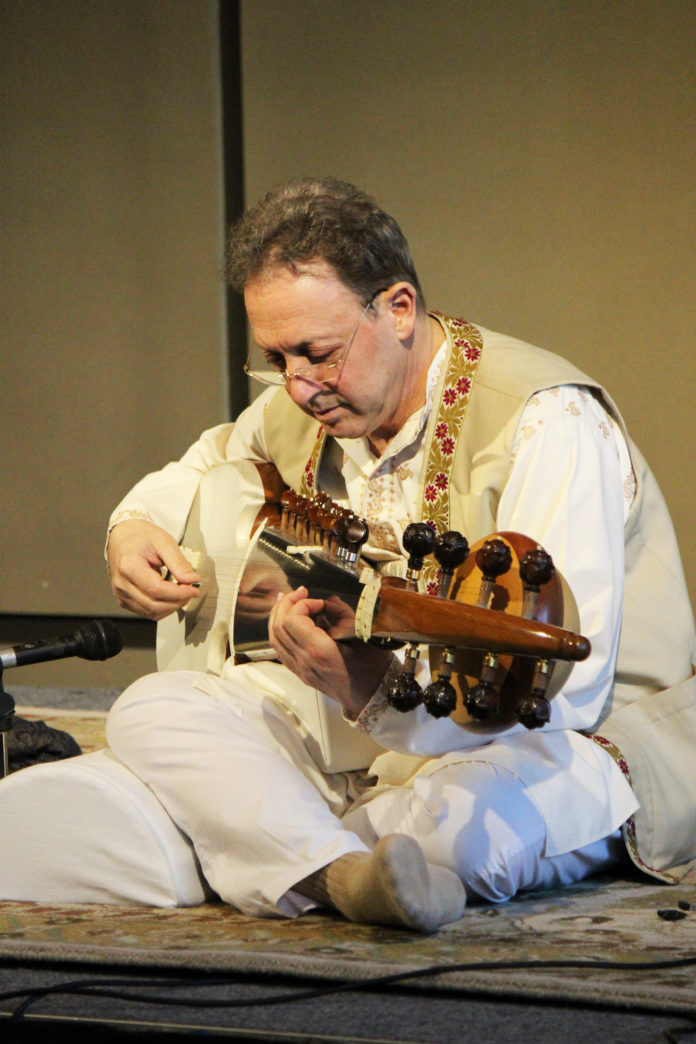Every spring semester the virtuoso Ken Zuckerman comes to Muhlenberg’s campus to perform as well as give a workshop over his vocal and performance technique. It’s a wonderful opportunity to see a master of his craft in person—learning his ways of performance, rhythm technique and further mastery over the ragas passed to him orally.
To those unfamiliar with classical Indian music, the instruments played in Zuckerman’s concert were the sarod (played by Zuckerman), the tablas (small drums) and the Tanpura. The Tanpura, while not physically there, was played through a recording Zuckerman brought along with him in his travels; the instrument serves as a resounding drone throughout the performance, providing the tonic note as a means of guiding the improvised pieces that are about to be performed.
In general, notes within the ragas performed are all within “relation to the tonic,” Zuckerman explained, “all the intervals are tuned to perfect [these] relations.”
Both the Tanpura and the Sarod apply to this notion as they both are stringed instruments used to guide as well as explore the ragas being performed. However, what is a raga and why is it important?
A raga, generally, consists of certain notes within a certain ‘scale’—all of which performed within a certain rhythmic pattern. Each raga is performed differently, the goal being to follow the guidelines of the scale and pattern in question—while also creating completely improvised pieces. It is a performance of intense virtuosity, passion and mental concentration.
‘Scale,’ however, is not the most accurate term to describe a raga. A scale generally is a series of notes generated in a single motion—upward or downward. A raga however, differs and varies in motion, ornamentation and its very structure. A raga is defined by not only the notes, but the order they are played, as well as the means in which they sound.
“By limitation, I would revise that to say rules,” said Zuckerman, when describing the concept of ragas, “once you know the rules then you’ll find there are no limitations.”
Zuckerman shared with us the long and rigorous process that’s involved in studying the art of Indian classical music. “You are totally dependent on a teacher for your repertoire,” Zuckerman shared, “the process of learning…music by ear; listening to them play… I still am not finished.”
Zuckerman continued to explain the ‘meter’ that is used throughout practiced ragas; except his way of teaching reflected this influence of listening to learning through pure visual medium. Using a series of syllables such as “ta ka” and “ta ka di mi,” the audience was soon able to shift from five-four to seven-five rhythmic structures. While difficult, it was remarkable to see the progress the audience demonstrated through only listening and repeating after Zuckerman.
The third instrument, which accompanied Zuckerman’s sarod playing, was the tablas player. Two drums are used to play a distinct rhythmic cycle—which also serves as a means of defining the raga in question. Each raga follows its own certain rhythmic cycle that reflects not only its compositional style—but the intention of the composer.
Lauren Mazur, member of the class of 2019, serves as the co-editor of the Arts & Culture section. Now a Junior, she is a double major in English and Music as well as a part of the Pre-Law program.






















